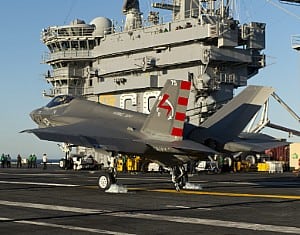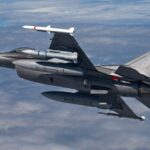
FORT WORTH, Texas--Lockheed Martin [LMT] is exceeding the Defense Department’s specification for F-35 low observable maintenance thanks to lessons learned, innovation and designing low observable as a system, according to a company official.Lockheed Martin spokesman Mark Johnson said recently that the low observable maintenance standard for F-35 is to have less than, or equal to, 0.32 maintenance manhours per flight hour for low observable repair at fleet maturity of 200,000 hours. Johnson said the company is at less than, or…













